
American Bittersweet
Celastrus scandens
Celastraceae (Spindletree Family)

▲▼ mature vines on fence at University of Missouri Southwest Center in Mt. Vernon, MO
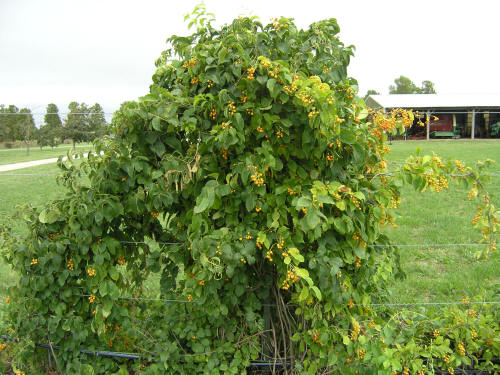
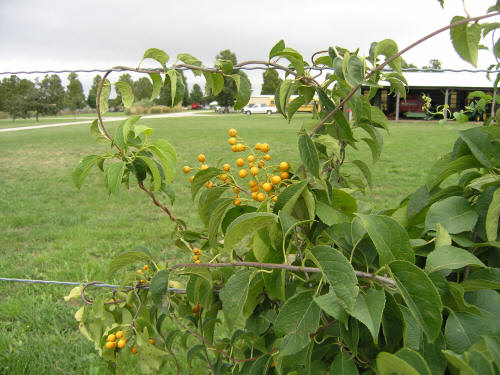
▲ illustration of vine twining around the fence wires
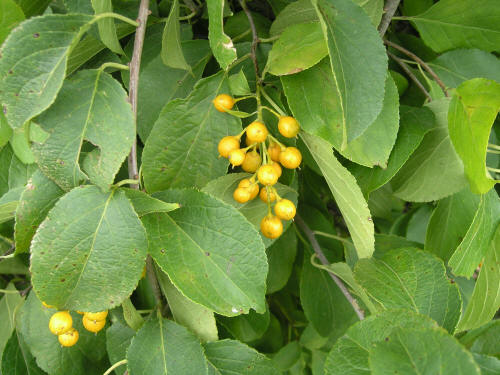
▲ cluster of immature fruit with leaves
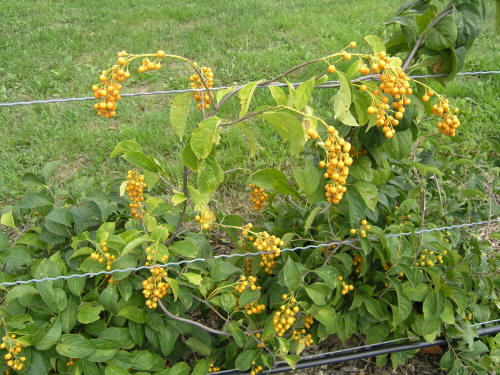
▲▼ fruit are in clusters at tips of stems, not at each leaf node (important to distinguish it from invasive Chinese Bittersweet (Roundleaf Bittersweet)
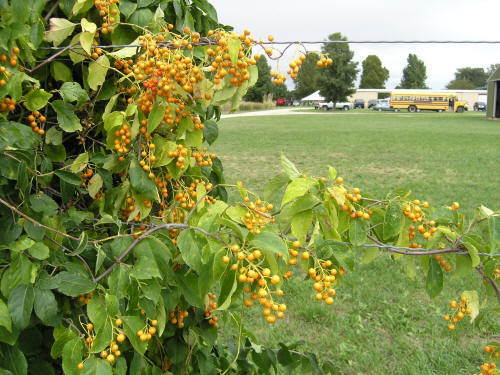

▲ close-up of mature fruit, splitting to reveal darker-orange centers

▲ leaves and stems
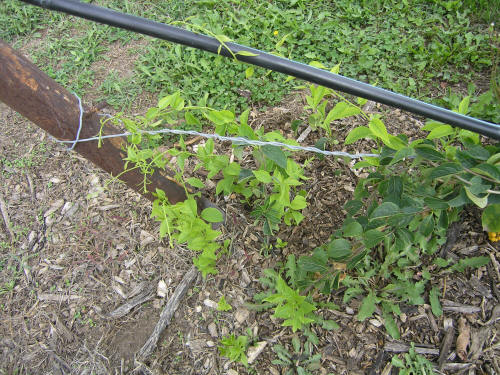
▲ young shoots twining up from rootstocks
Location on or near campus: not known
Celastrus
scandens: American
Bittersweet
·
Deciduous vine with opposite, ovate
leaves, shiny dark green leaves with serrate to crenate margins and pointed tip;
2-4" long
·
Vine is brown to tan and climbs by
twining about 20' tall; can kill plants by girdling stems
·
Dioecious; flowers not showy, but
3-lobed, bright orange capsule fruit with crimson seeds in terminal clusters at
tips of stems on female plants are very showy and are used in dried arrangements
·
Fast rate of growth
·
Prefers full sun, but tolerates
some shade; adaptable to soil types
·
Important to distinguish the
increasingly less common native American Bittersweet from the invasive
Chinese or Oriental
Bittersweet before cultivating, by looking for the following
distinguishing characteristics:
o
Leaves:
American bittersweet leaves more oval, at least twice as long as wide;
Chinese Bittersweet has more rounded leaves less than twice as long as wide
o
Fruit:
American bittersweet has flowers/fruit in terminal panicles at tips of
stems, and the fruit capsule is more orange; Chinese Bittersweet has
flowers/fruit in axils of leaves and the fruit capsule is more yellow-orange